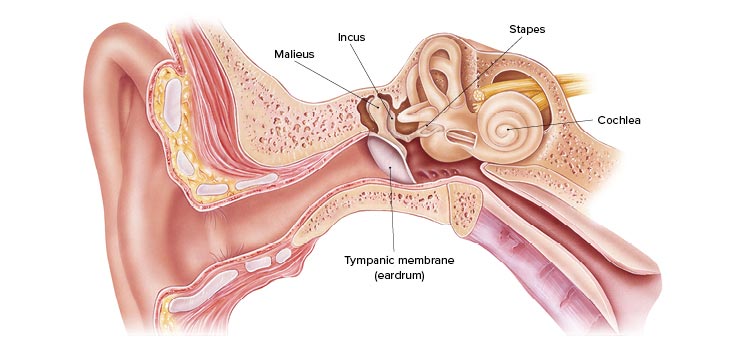Many of our hearing centres are open over Christmas. Check your local centre's opening hours and book your appointment here. Customer service & booking teams will be open on reduced hours.

Otosclerosis
Otosclerosis is a rare condition that can cause gradual hearing loss. It affects the middle ear, found behind the eardrum and which is predominantly filled with air. There are three bones within the middle ear section called the malleus, the incus and the stapes.

To have a full hearing range, the bones in the middle ear need to be able to move around freely. When someone is suffering from otosclerosis, extra bone material grows around the bones, usually from the foot of the stapes. This additional growth restricts the movement of the bone and this will reduce the amount of sound that is sent to the cochlea. The growth of this additional bone is gradual, so it’s not a condition that happens overnight. Rather, there’ll be a gradual loss of hearing over time, which can be described as a conductive hearing loss.
In most cases of otosclerosis, it’s just the stapes which are affected but in some cases, it can have an impact on the cochlea too. If this turns out to be the case, there is a chance of nerve cells being damaged which will impact on the impulses being sent to the brain. In this situation, the type of hearing loss is referred to as a sensorineural loss of hearing. With otosclerosis, both ears can be affected, but it is not uncommon for just one ear to be affected.
Who suffers from otosclerosis?
Otosclerosis affects about 1–2% of the population and usually develop in people’s late 20s or 30s. Women are twice as likely to suffer from otosclerosis as men. While pregnancy is not seen as a cause of otosclerosis, pregnancy can make symptoms worse. Given the gradual development of otosclerosis, people may have the condition for years before noticing it.




